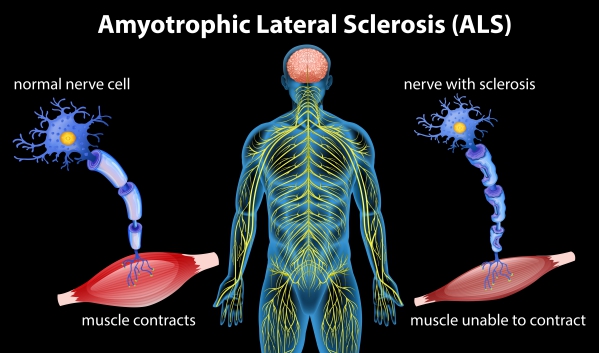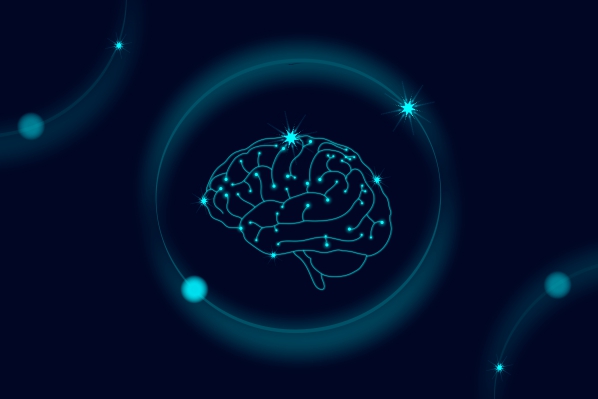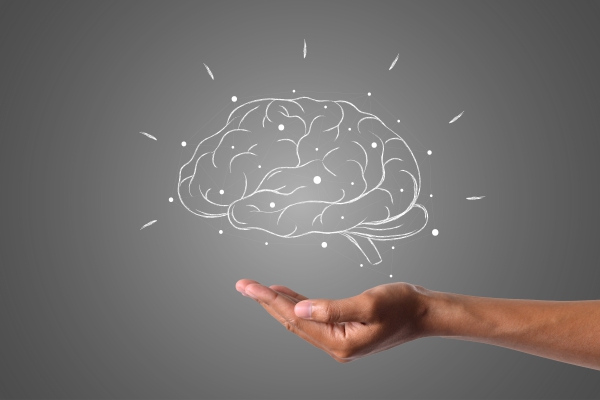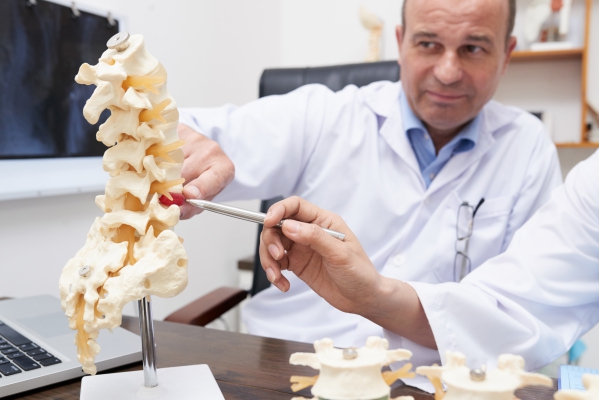What is ALS?
ALS is a progressive degenerative disease of the nervous system that affects nerve cells in the brain and spinal cord, resulting in loss of muscle control. It is the most common degenerative disease of the motor neuron system. In addition, it is incurable and often fatal. Unfortunately, the exact cause why it occurs is still unknown. Initially ALS causes symptoms such as stumbling, slurred speech, cramping and weakness in the upper limbs. However, as the disease progresses, more serious symptoms arises such as loss of control of muscles that are required to move, speak, eat or even breathe.
In the United States, 5600 citizens are diagnosed with ALS each year. The lifetime risk of developing ALS in people aged above 18 years is 1 in 350 for men and 1 in 420 for women. However, in other parts of the world men are more commonly affected than women. Finland has one of the highest rates of ALS in the world. In addition, whites are more at risk of developing ALS than non-whites.
What causes ALS?
Unfortunately the exact cause of ALS is still unknown. However, it has been suggested that 5-10% is inherited. ALS is a degenerative disease of the nervous system which causes progressive deterioration of the motor neurons and later their death. These neurons extend from the brain to the spinal cord to the muscles throughout the body. When these neurons are dead, they stop sending messages to the muscles, so the muscles cannot function.

What are the risk factors for ALS?
There are several factors which may increase your risk of developing ALS and these include:
- Age: The risk of developing ALS increases with age and is most common in people aged between 40-60 years.
- Sex: Men are more at risk of developing ALS than women.
- Heredity: 5-10% of the people with ALS inherited it and is known as familial ALS. A child whose parent has ALS, has a 50% chance of having it.
- Smoking: Smoking is one of the known environmental risk factor for ALS.
- Lead exposure: Exposure to lead in the workplace has been associated with the development of ALS.
What are the signs and symptoms of ALS?
ALS often affects the hands first and then spreads to other parts of the body. The signs and symptoms often varies from person to person, depending on which neurons are affected, and include:
- Stumbling and falling.
- Difficulty walking.
- Inability to perform basic daily activities.
- Slurred speech.
- Difficulty swallowing.
- Weakness in the hands, legs, ankles and feet.
- Behavioural changes.
- Excessive yawning.
- Involuntary laughing or crying.
- Muscle cramps and twitching in your shoulders, tongue and arms.
- Depression.
- Voice changes.

There are several diseases or conditions which may resemble ALS and these include:
- Lyme disease.
- Multiple sclerosis.
- Brainstem gliomas.
- Central cord syndrome.
- Neurosarcoidosis.
- Chronic inflammatory demyelinating polyradiculoneuropathy.
- Polymyositis.
- Primary lateral sclerosis.
- Posttraumatic syringomyelia.
- Spinal muscular atrophy.

Making a diagnosis
To make a diagnosis, your doctor will first take a detailed history from you to know more about your symptoms. After the history taking, your doctor will perform a thorough physical examination to look for signs of ALS. To confirm the diagnosis, your doctor will order some tests and these include:
- Electromyogram (EMG): An EMG involves your doctor inserting a needle into your muscles through your skin to evaluate the electrical activity of your muscles when they contract and when they are at rest.
- Blood and urine tests: These test are mainly done to rule out other diseases which may be the cause of your signs and symptoms.
- Nerve conduction studies: This test measures how well your nerves are sending impulses to your muscles in different parts of your body to determine if you have any nerve damage somewhere in your body.
- Magnetic Resonance Imaging (MRI) scan of the brain and spinal cord: AN MRI scan of the brain and spinal cord is done to assess for the presence spinal cord tumours or herniated disks in your neck which might be causing your symptoms. MRI scans use radio waves and a powerful magnetic field to produce detailed images of the part of the body being assessed.
- Lumbar puncture: A lumbar puncture involves your doctor inserting a needle into your spine to obtain a fluid known as cerebrospinal fluid (CSF). This fluid is then examined for the presence of inflammation processes or infections.
- Muscle biopsy: This test is done when your doctor suspects a muscle disease rather than ALS. It involves your doctor taking a small piece of your muscle under local anaesthesia to be examined in the laboratory.

What are the treatments of ALS?
The treatments of ALS cannot reverse the damage done by the disease but can help to slow down the progression of the disease, provide relief to your symptoms and prevent complications. The treatment of ALS include:
- Riluzole: This drug has shown to increase the life expectancy by 3-6 months and is taken orally. Unfortunately, it is associated with some side effects including dizziness, altered liver function and stomach upset.
- Edaravone: This drug has shown to diminish the decline in daily functioning and is usually given as an intravenous infusion. Unfortunately, it is associated with some side effects including headaches, easy bruising and difficulty breathing.

Other medications may be given to treat other symptoms that may accompany ALS such as for pain, fatigue, constipation, depression, sleep problems or muscle cramps amongst others.
There are several therapies that you may undergo to help you with your symptoms including:
- Physical therapy: Physical therapy can help you with walking, exercises and pain control. In addition, it will enable you to learn how to use the equipment you need to use for walking to stay independent.
- Breathing care: As the disease progresses, you will have more and more difficulty to breathe as you muscle responsible to aid breathing will continue to weaken. Your doctor may provide devices that will assist you with breathing at night. In addition, you may choose mechanical ventilation which involves your doctor making a hole in front of your neck surgically (tracheostomy) to connect to a respirator.
- Speech therapy: Speech therapy will enable you to speak more efficiently so that you become more understandable. In addition, you will be taught new ways of communication such as using an alphabet board or pen and paper.
What are the complications of ALS?
The complications of ALS include:
- Breathing difficulty.
- Speech difficulty.
- Choking while eating and drinking due to swallowing difficulty.
- Lung failure.
- Lung infections.
- Weight loss.
- Pressure sores.
- Death.

Expectations (prognosis)
Unfortunately, ALS is a fatal disease, typically due to respiratory failure. The average survival is 3 years from onset of weakness. However, in certain cases the affected person may survive longer.

Source:
J. Alastair, I. and Simon, M., 2016. Davidson's Essentials of Medicine. 2nd ed. London: ELSEVIER.
Parveen, K. and Michael, C., 2017. Kumar & Clarks Clinical Medicine. 9th ed. The Netherlands: ELSEVIER.
Armon, C., 2018. Amyotrophic lateral sclerosis.
Brooks BR, Miller RG, Swash M, Munsat TL. El Escorial revisited: revised criteria for the diagnosis of amyotrophic lateral sclerosis. Amyotroph Lateral Scler Other Motor Neuron Disord. 2000 Dec. 1(5):293-9.
Phukan J, Hardiman O. The management of amyotrophic lateral sclerosis. J Neurol. 2009 Feb. 256(2):176-86.
Armon C. What is ALS?. Bedlack RS, Mitsumoto H, Eds. Amyotrophic Lateral Sclerosis: A Patient Care Guide for Clinicians. New York: Demos Medical Publishing; 2012. 1-23.









